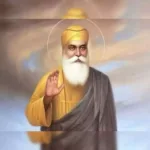“Celebrate Navratri 2024 with devotion, fasting, and joy. Discover powerful traditions and spiritual practices during the 9-day festival dedicated to Goddess Durga.”

Navratri, one of the most celebrated festivals in India, is a time of deep devotion, fasting, and joy. This nine-day festival is dedicated to worshipping the nine forms of Goddess Durga, each symbolizing a unique power and aspect of life. The word “Navratri” itself means “nine nights,” during which devotees honor and pray to the divine feminine energy, seeking blessings, protection, and strength. The focus keyword “Navratri 2024” is especially relevant as it marks the start of a spiritual journey for millions, with each day being dedicated to one of the nine powerful forms of Goddess Durga.
Let’s take a closer look at the role of these nine manifestations of Durga and the significance they hold in our lives.
1. Shailaputri (Daughter of the Mountains)
The first day of Navratri is devoted to Shailaputri, the daughter of the Himalayas. She represents the strength and grounded nature of the mountain, symbolizing purity and determination. Shailaputri is often worshipped by devotees seeking stability and a strong foundation in life. Her presence reminds us of the importance of staying rooted in our values and principles, even in the face of challenges. Learn more about Shailaputri (DoFollow link).
2. Brahmacharini (The Ascetic)
On the second day, devotees worship Brahmacharini, the embodiment of penance, devotion, and spirituality. She teaches us the power of dedication and discipline. Brahmacharini signifies the path of wisdom and knowledge, encouraging her followers to stay committed to their spiritual goals. Her role during Navratri is to inspire inner strength and the courage to pursue self-realization. Read about Brahmacharini (DoFollow link).
3. Chandraghanta (Warrior Goddess)
The third day of Navratri honors Chandraghanta, the goddess who carries a half-moon on her forehead and rides a fierce tiger. She symbolizes bravery, peace, and serenity. Despite her warrior-like appearance, Chandraghanta brings peace to her devotees, helping them conquer fears and overcome obstacles. Her power is a reminder of the importance of inner peace amidst life’s struggles. Discover more about Chandraghanta (DoFollow link).
4. Kushmanda (The Creator of the Universe)
On the fourth day, Goddess Kushmanda is worshipped. She is believed to have created the universe with a smile. Representing warmth and vitality, Kushmanda’s role is to remind us of the creative power within ourselves. Just as she created the world, we too have the ability to shape our lives through positivity and determination. Find out more about Kushmanda (DoFollow link).
5. Skandamata (Mother of Skanda)
The fifth day is dedicated to Skandamata, the mother of Lord Kartikeya (also known as Skanda). She is the symbol of a mother’s love and nurturing nature. Skandamata represents selfless love, protection, and the ability to overcome adversity for the sake of one’s children or loved ones. Her presence in Navratri encourages devotees to embrace compassion and selflessness. Explore Skandamata’s importance (DoFollow link).
6. Katyayani (The Warrior Goddess)
Goddess Katyayani is worshipped on the sixth day of Navratri. She is known for her fierce and warrior-like form, symbolizing courage and victory over evil. Katyayani is often invoked by those seeking justice and protection. Her role is to remind us that while peace and devotion are important, there are times when we must also stand up and fight against wrongdoings. Learn more about Katyayani (DoFollow link).
7. Kalaratri (The Dark Goddess)
On the seventh day, devotees honor Kalaratri, the goddess with a dark complexion who represents the destructive power of time. While her appearance is terrifying, her role is to protect her followers from evil and negative energies. Kalaratri teaches us the importance of facing our fears and accepting the darker aspects of life. Her presence symbolizes the end of ignorance and the beginning of wisdom. Discover Kalaratri’s story (DoFollow link).
8. Mahagauri (The Radiant Goddess)
Mahagauri, the goddess of purity and peace, is worshipped on the eighth day. She is often depicted in white, symbolizing serenity and purity. Mahagauri’s role is to purify the minds of her devotees and guide them toward a state of peace and calm. Her power helps remove impurities from one’s heart, leading to spiritual enlightenment. Learn more about Mahagauri (DoFollow link).
9. Siddhidatri (The Goddess of Supernatural Powers)
The final day of Navratri is dedicated to Siddhidatri, the goddess who grants divine knowledge and supernatural powers. Siddhidatri represents perfection and the fulfillment of desires. Her role in Navratri is to bestow blessings upon her devotees, helping them achieve their goals and attain spiritual wisdom. She reminds us of the divine potential that exists within every human being. Discover the powers of Siddhidatri (DoFollow link).
Conclusion
Each of the nine forms of Goddess Durga plays a vital role in guiding devotees on a spiritual journey during Navratri. From strength and stability to compassion, courage, and wisdom, these goddesses represent the qualities that are essential to leading a balanced and meaningful life. Navratri 2024 is not just a celebration; it is a time to reconnect with the divine feminine energy, unlock our inner power, and embrace the joy that comes with devotion and spiritual growth. By honoring these forms of Durga, we unlock the blessings they offer, filling our lives with positivity, strength, and purpose.




